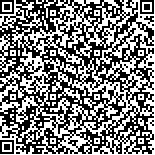| 引用本文: |
黄家望, 付靖敏, 冯芷莹, 王康宇, 刘卓琳, 蒋雪莲, 杨佳欣, 喻嵘, 李玲.基于数据挖掘和动物实验探讨含桔梗方剂的用药规律及作用机制[J].湖南中医药大学学报,2025,45(1):49-58[点击复制] |
|
| |
|
|
| 本文已被:浏览 1814次 下载 1033次 |
| 基于数据挖掘和动物实验探讨含桔梗方剂的用药规律及作用机制 |
| 黄家望,付靖敏,冯芷莹,王康宇,刘卓琳,蒋雪莲,杨佳欣,喻嵘,李玲 |
| (湖南中医药大学中医学院, 湖南 长沙 410208;湖南中医药大学中西医结合学院, 湖南 长沙 410208) |
| 摘要: |
| 目的 综合运用数据挖掘、网络药理学和动物实验等方法,旨在揭示桔梗的配伍规律、潜在作用机制及其药效,为桔梗在临床治疗和科研开发中的应用提供科学依据。方法 从药智网中药方剂数据库中收集含桔梗的方剂数据,运用频数、关联规则、聚类等统计分析方法进行数据挖掘,并利用Cytoscape 3.8.0软件进行数据可视化。通过TCMSP数据库获取桔梗的作用靶点,并结合GeneCards和OMIM数据库中的肺炎疾病靶点,构建蛋白质-蛋白质相互作用(PPI)网络,进行GO富集分析和KEGG富集分析。此外,通过脂多糖(LPS)构建急性肺炎模型,以评估桔梗治疗肺炎的疗效。结果 共纳入1 811首含桔梗的方剂,涉及484味中药,累计用药总频数达22 155次。桔梗常与补虚药、化痰止咳平喘药、解表药、清热药、理气药等类别的中药配伍,药性以温、寒、平为主,药味以辛、苦为主,主要归肺、脾、胃、心经。关联规则分析揭示了7组核心药物组合(支持度>25%)。聚类分析筛选出频数>300的高频药物,得到3组3味药物组合和1组2味药物组合,以及3味单药。主治病证以肺系、气血津液及脾胃系病证为主,其中肺系病证频率最高。在治疗肺系病证时,聚类分析得到2组3味药物组合和3味单药。网络药理学分析显示,桔梗中的主要活性成分金合欢素、顺二氢槲皮素和木犀草素能够通过调节多个途径和靶点减缓肺炎的发展。桔梗能够显著减轻LPS引起的肺组织结构损伤和血清中炎性细胞因子的分泌水平(P<0.05)。结论 桔梗作为一种常用的临床中药,尤其在治疗肺系疾病方面,能够通过与多种中药配伍,从多途径发挥治疗作用。 |
| 关键词: 桔梗 数据挖掘 配伍规律 网络药理学 肺炎 动物实验 药效 |
| DOI:10.3969/j.issn.1674-070X.2025.01.007 |
| 投稿时间:2024-10-06 |
| 基金项目:国家自然科学基金资助项目(81973670);湖南省教育厅优秀青年项目(23B0379);湖南省中医药科研课题重点项目(A2024010);长沙市自然科学基金项目(kq2402183)。 |
|
| Exploring the medication patterns and mechanism of action of Jiegeng(Platycodonis Radix)-containing formulas based on data mining and animal experiments |
| HUANG Jiawang, FU Jingmin, FENG Zhiying, WANG Kangyu, LIU Zhuolin, JIANG Xuelian, YANG Jiaxin, YU Rong, LI Ling |
| (School of Chinese Medicine, Hunan University of Chinese Medicine, Changsha, Hunan 410208, China;School of Integrated Chinese and Western Medicine, Hunan University of Chinese Medicine, Changsha, Hunan 410208, China) |
| Abstract: |
| Objective To elucidate the combination rules with other Chinese medicines, underlying mechanism of action, and pharmacological effects of Jiegeng(Platycodonis Radix) through the integrated use of data mining, network pharmacology, and animal experimentation, thereby providing a scientific basis for its application in clinical treatment and research and development. Methods Data on formulas containing Jiegeng(Platycodonis Radix) were collected from the Traditional Chinese Medicine Formula Database of the Drug Intelligence Network. Statistical analysis methods such as frequency, association rules, and clustering were applied for data mining, and data visualization was conducted using Cytoscape 3.8.0 software. Theraputic targets of Jiegeng(Platycodonis Radix)obtained from the Traditional Chinese Medicine Systems Pharmacology(TCMSP) database, integrated with the disease targets of pneumonia from the GeneCards and Online Mendelian Inheritance in Man(OMIM) databases, were used to construct a protein-protein interaction(PPI) network. Subsequently, GO and KEGG enrichment analyses were performed. Furthermore, an acute pneumonia model was established using lipopolysaccharide(LPS) to assess the efficacy of Jiegeng(Platycodonis Radix) in treating pneumonia.Results A total of 1,811 formulas containing Jiegeng(Platycodonis Radix) were included, involving 484 types of Chinese medicines with a cumulative frequency of 22,155 administrations. Jiegeng(Platycodonis Radix) was commonly combined with tonic medicines,phlegm-transforming, cough-stopping, and panting-alleviating medicines, exterior-releasing medicines, heat-clearing medicines, and qi-regulating medicines, which were mainly warm, cold, or neutral in property and pungent or bitter in flavor, and primarily entered the lung, spleen, stomach, and heart meridians. Association rule analysis revealed seven core Chinese medicine combinations with a support rate greater than 25%. Cluster analysis identified high-frequency Chinese medicines with a frequency greater than 300,resulting in three three-medicine combinations, one two-medicine combination, and three single Chinese medicines. The main indications were disorders of lung system, qi, blood, and body fluids, and spleen and stomach system, with the highest frequency in disorders of lung system. In the treatment of lung system disorders, cluster analysis yielded two three-medicine combinations and three single Chinese medicines. Network pharmacology analysis showed that the main active ingredients of Jiegeng(Platycodonis Radix), including acacetin, cis-dihydroquercetin, and luteolin, can modulate multiple pathways and targets to alleviate pneumonia. Results of the animal experiments confirmed that Jiegeng(Platycodonis Radix) significantly reduced lung tissue structural damage and the secretion levels of inflammatory factors in serum induced by LPS(P<0.05). Conclusion As a commonly used Chinese medicine in clinical practice, especially in the treatment of lung system diseases, Jiegeng(Platycodonis Radix) can exert therapeutic effects through various pathways when combined with a range of other Chinese medicines. |
| Key words: Jiegeng(Platycodonis Radix) data mining combination rule network pharmacology pneumonia animal experiments pharmacodynamics |
|

二维码(扫一下试试看!) |
|
|
|
|




